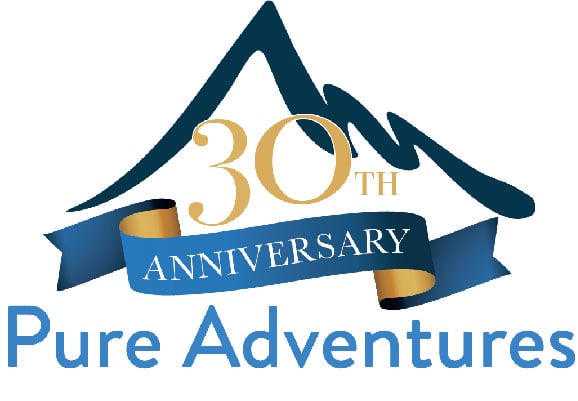The Spanish have a saying: “hasta el cuarenta de mayo no te quites el sayo“, which roughly translates to don’t take your coat off until June. For this reason, Spain isn’t always top of mind when it comes to spring cycling and hiking travel destinations. But the reality is that early spring is a great time to visit Spain – it’s warm enough that you can ride or hike in lightweight gear, and most of the tourists haven’t arrived yet. Flights are more affordable, making it a great off-season destination not only for hikers and cyclists, but any traveler wanting to avoid crowds.
Bo Lohmann, Pure Adventures’ European product manager, works and lives in Girona, Spain. In this guest blog post, Bo shares his favourite trails, gear and food to help you plan a self-guided trip to Spain.
Trails
Camino de Santiago (Saint James Way/Trail): Not because I dig religion but this trail is special for the variety of scenery, because you’re meeting all kinds of weird, funny and interesting people, because of its over than 1000 years of history with all its incredible cathedrals, bridges, monasteries, legends, myths….It’s not as touristy as you may think and there are lots of add-on options (Pyrenees, Basque Country, Galician Coast…) and one of the most beautiful cities in Spain as the destination: Santiago de Compostela. If you want to avoid the main trail (Camino Frances) you can try the “Camino Aragones” in the Pyrenees or the “Camino del Norte” following the Cantabric Coast along the Atlantic Ocean or the “Via de la Plata” coming from Andalusia in the South including impressive cities like Seville, Salamanca, Caceres and Merida.
The Benasque Valley in the heart of the Pyrenees surrounded by the highest peaks in that range (Aragon region): excellent for walking, hiking, rock climbing and skiing. Excellent trails from easy to Challenging including guided hikes up to the Aneto, the highest mountain in the Pyrenees and also glacier lakes of incredible beauty. Insider tip: Avoid busy Benasque and try Casa Cornel in Cerler, for me one of the best hotels I’ve been in a great setting, lovely rooms, attentive staff and great food. You need a rental car though to get to the valley and to get around (not easy to reach in public transport).
If you’re in the region, you shouldn’t miss the NP Ordesa-Monte Perdido.
For Coastal Walks, the long distance trail GR-92 following the Costa Brava between the French border and all the way to Barcelona. Some sections are built-up with resorts, but others offer very scenic coastal sections with little coves, only accessible by boat and on foot. We will offer the section between Palamós and L’Estartit with one of the new walking itineraries.
For some more hikes in the Girona region: the Camprodon and Nuria Valleys for hikes in a moderate mountainous region (up to 2000m) which we will cover with 2 itineraries
Another great region for walking is the Alpujarras south of Granada.
La Gomera is the best Canary island for walking (in my opinion).
Gear
- Swiss army knife (again)
- Enough water and sun protection (cream, glasses, hat)!
- Long or 3/4 trousers (I don’t like shorts because of shrubs, very common in coastal regions)
- Don’t use new boots! They should be broken-in right, cover your ankles and rather stiff soles.
- Unlike the tip in our recent blog post I don’t recommend changing your socks daily. It may not sounds as nice (and smell!) but once you have found a good pair of socks you can use them various days and then wash them. Modern hiking socks dry fast.
- Walking sticks. They’re not cool but very helpful.
- A light rain jacket (for our regions in pleasant mild weather)
- Daypack: not more than 20 liters. I use Deuter but there are many more good ones
- Comfortable clothing is very important. There are incredible fabrics, lightweight, durable that dry fast. Use various layers and always carry a light fleece for stops or if it gets windy
Food
- For a day hike I don’t take lots of stuff: dry fruits, chocolate, a sandwich.
- More important is water and enough of it. People may want to consider a hydration pack (like Camelbak) but you need to have a backpack that’s prepared to carry it. Also some people don’t really like the plastic aftertaste (not much but I note the difference)

